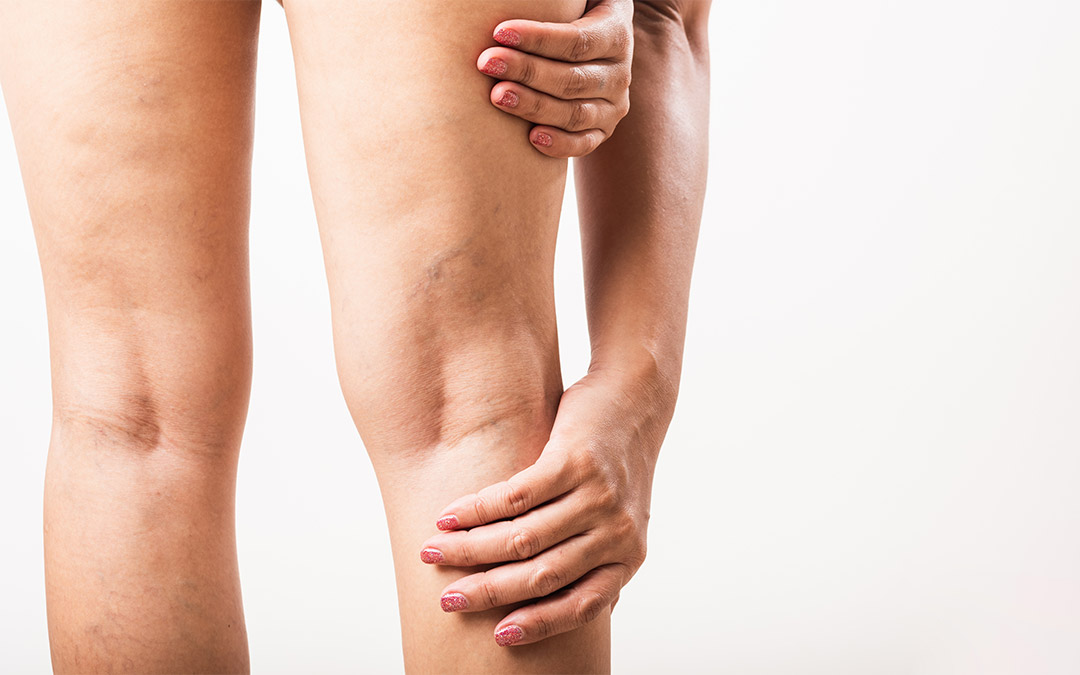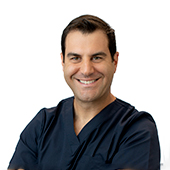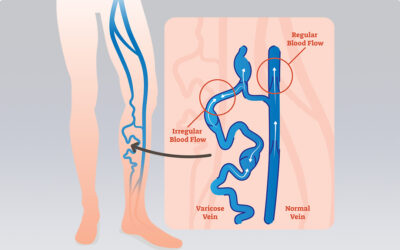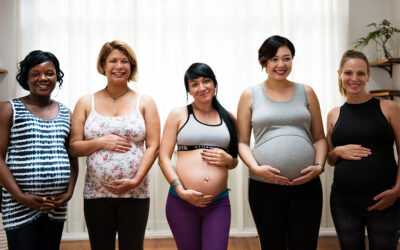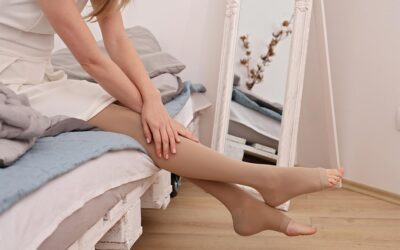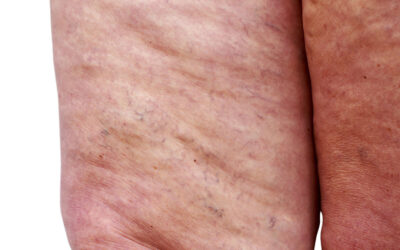Poor circulation is a symptom, not a disease. When we observe the signs of circulation problems such as muscle cramps, throbbing or stinging pain in the limbs, pins, and needles, or a sensation of numbness, we should pay attention. Poor circulation is identified by those signs and symptoms because obviously, we’re rarely aware of the passage of blood flow through our veins and arteries. Poor circulation is associated with diseases like diabetes, obesity, peripheral artery disease, thrombus (blood clots), varicose veins, and Raynaud’s disease.
Let’s look at the symptoms of varicose veins and what they have in common with signs of poor circulation in the legs.
Venous insufficiency (varicose veins) may present as either:
- Visible veins on the skin surface with no other symptoms, either visibly large and bulging varicose veins or smaller thread-like spider veins.
- Visible veins on the skin surface with symptoms like localised leg pain and aching, cramping and restless legs at night, leg heaviness, burning, itching, and throbbing. For severe cases of varicose veins, you may also experience skin irritation or venous eczema, swelling, skin discolouration, inflammation, and infections, or even leg ulcers.
- Symptoms alone with no problem veins visible on the surface of the skin.
You can see there is some cross-over of the symptoms of varicose veins and how poor circulation presents.
Why is that: what are varicose veins?
The circulatory system moves oxygenated blood to the extremities via the arteries. Deoxygenated blood is pumped back toward the heart via the veins. This is a harder task, as the blood flow must work against gravity. The vein walls have one-way valves that allow blood to flow in one direction with each heartbeat, and not flow backward between beats.
For those genetically predisposed to varicose veins, those who have been pregnant, and those who stand for long periods, these valves can fail. A failed valve allows blood to leak backward. The blood gathers in the damaged section of the vein, causing the veins to balloon up, and appear twisted and bulging on the skin surface. This causes a range of other symptoms, such as leg pain, cramping, swelling, etc.
As you can see, poor circulation doesn’t cause varicose veins – quite the opposite. Varicose veins cause poor circulation, called venous insufficiency or incompetency, so named because the veins become inefficient at returning blood to the heart.
Treatment for incompetent veins
Today’s varicose vein treatments are minimally invasive and cause minimal discomfort. After a thorough examination and a duplex ultrasound to map out the root of the problem, your phlebologist (vein doctor) will select the right treatment based on the size of the veins and the severity of the disease. It’s important to seek medical treatment, as the veins do not heal on their own and medical intervention is the only way to get permanent relief from symptoms. It is also the way to manage the condition if you have a progressive form of the disease that will worsen as you age.
The most common modern vein treatments involve irritating/injuring and sealing closed the section of the problem vein, rerouting blood to nearby blood vessels. The sealed vein hardens, then heals over time. This injury to the vein can be done by injecting a sclerosant (sclerotherapy), activating a laser fibre inside the damaged section of the vein (endovenous laser ablation), activating a thermal fibre (radiofrequency ablation), or injecting a medical superglue into the vein (VenaSeal). Some work best for tiny surface veins, others are designed for larger diameter veins.
Key takeaways
- Poor circulation is a symptom, not a disease, but may be an indicator of disease.
- Poor circulation is not the cause of varicose veins, it is a result of failed valves in the vein walls. This makes the veins inefficient at returning deoxygenated blood to the heart.
- Varicose veins do not heal on their own or with oral supplements or topical creams. Medical intervention is necessary.
- Learn how to get short-term pain relief from varicose veins here.
- Non-invasive treatments available at Vein Health include sclerotherapy, endovenous laser ablation, radiofrequency ablation, and VenaSeal medical glue.
What causes varicose veins?

